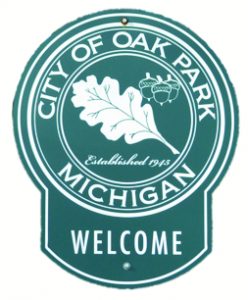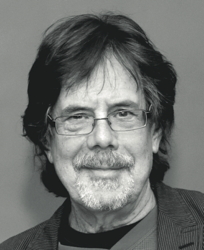Oak Park : A Model of Diversity
By Oak Park resident, Peter Werbe
I never wanted to live in a suburb. I was born and raised in Detroit, attended its schools and, although I went away to college for a period, I finished my studies at Wayne State University. My wife and I happily moved into the area surrounding its campus with an appreciation of the student activism and exciting cultural scene of the time.
The suburbs always represented to me the worst about America. Culturally sterile, ticky-tacky houses, the artificiality of shopping malls, and – let’s be frank – where white people often moved so as not to live
close to minorities.
Each fall in the Detroit pubic schools I attended, the social studies department would sponsor a model  United Nations, a miniature replica of the actual session occurring simultaneously at the UN headquarters in New York City. The flags of the many nations were flown, and students would be chosen to represent ambassadors from the world’s different countries, sometimes even donning the garb of their nation of origin.
United Nations, a miniature replica of the actual session occurring simultaneously at the UN headquarters in New York City. The flags of the many nations were flown, and students would be chosen to represent ambassadors from the world’s different countries, sometimes even donning the garb of their nation of origin.
Duly assembled, we would hold a pretend UN session where we worked on solving the world’s problems. I was always fascinated by the diversity of cultures even in this small representation of them.
By the 1980s, Detroit proper was hollowed out by de-industrialization driven by corporate search for cheap labor and white flight enabled by bank loans for massive suburban home construction and individual mortgages. Beginning in the 1950s, the government generously financed freeways to provide mobility to a new generation of segregated suburbs.
With its tax base eroded and good jobs having disappeared, Detroit’s remaining residents (mostly African Americans) who couldn’t afford to leave the city or were refused entry to suburbs like Dearborn, faced deteriorating urban conditions accompanied by a rise in crime.
After a third burglary at our house in a year, my wife and I decided that, since we had the white privilege of residential mobility, we had to move to a safe housing situation particularly since I often worked overnight shifts as a WRIF-FM radio DJ. The prospect of moving to the ‘burbs, as we called them, was extremely depressing as we viewed them as representing everything that was wrong with our country — particularly racism, but also consumerism, Ozzie and Harriet-style families, and the epitome of the car culture.
As it turned out, we never looked anywhere other than Oak Park, since we were unintentionally aided in narrowing our search by someone who reacted negatively when we mentioned the city to which we eventually moved. We were told that anywhere south of I-696 “was still Detroit.” We knew then where we were moving. Up until the 1950s, Oak Park was predominantly a white, Catholic enclave. But, with the post-World War II housing boom, builders filled in the city’s wetlands and constructed affordable homes. Our new next-door neighbors on the East Side of Oak Park, who had been residents of the city since the late 1940s, said that before the construction frenzy of the early 1950s, they could see the traffic on Greenfield two miles away across what was then designated as “swamps.”
Jewish families from Detroit’s Northwest Side began migrating to the new and sometimes uniquely designed homes, such as the Lustron prefab steel homes on Oneida. And then the echoes of my school day’s model UN began to emerge in Oak Park. African Americans followed the Jewish population, then Chaldeans, Asians, Russians and Muslims making the word, diverse, a thriving reality. And, thrown into the mix are those of us from a European heritage who appreciate a city that isn’t of homogenous ancestry.
Oak Park’s disparate ethnic groups maintain a distinct identity around their own cultural markers and, to some extent, neighborhoods, but we all come together around the city’s institutions—its government, public facilities, and festivals.
This diversity is a source of pride to most Oak Parkers. Living in a city with good leadership, low crime, and excellent city services is reason enough to want to be within our borders. But, what makes our city special is that we look and act like a world of harmony— something desperately needed in these times.



